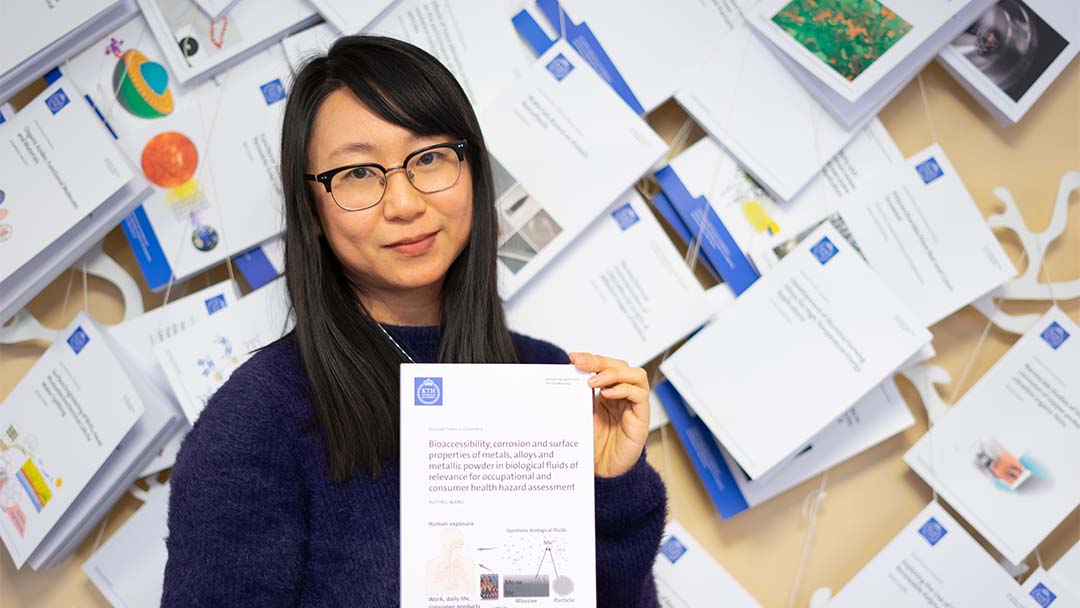Xuying Wang, Surface chemistry and corrosion science

When assessing hazards of metals, alloys, and metal-containing items, the metal release (bioaccessibility) is of high importance. Triggered by increasingly stricter hazard classifications for metals, especially cobalt (Co), and limited knowledge, the aim of Xuying Wang's doctoral thesis is to assess correlations between the metal/alloy surface characteristics, corrosion and metal release pattern in different simulated biological fluids relevant to human exposure scenarios (dermal, ingestion and inhalation, Papers I-V).
What is your research about?
"Human exposure to metal-containing products and particles via different exposure routes including skin contact, ingestion, or inhalation, unavoidably occurs in daily life and during occupational activities. Knowledge on the extent of metal release from such surfaces into biological fluids is of high importance as it may induce adverse health problems. Such aspects need to be considered in risk assessment and management," says Xuying Wang.
"The focus of my study is to assess the correlation between the chemistry of the biological environment, the metal/alloy surface characteristics and corrosion resistance of the powders, and the release of metal species (bioaccessibility) into solution."
What applications could this lead to?
"Hazard classification of alloys is today generally based on their nominal bulk elemental content and often extrapolated from the behaviour of the pure metal constituents. This approach seldom reflects the extent of metal release for a given environment."
"The importance of investigations of surface oxide composition and corrosion characteristics to explain bioaccessibility data and group metallic materials, without the need of animal testing, is highlighted in this study for an improved and refined hazard assessment of alloys. In addition, this study contributes to an improved understanding of the fundamental mechanism of metal release process in the different synthetic biological solutions."
What impact could it make on society?
"The European Green Deal, EU’s new growth strategy, has set goals to better protect human health and the environment as part of its ambitious approach on zero pollution and moves towards a toxic-free environment by 2050."
"Over the last few years, several regulations, such as REACH and CLP, have been successful in protecting worker and consumer health and the environment by providing a legislative framework for companies to operate to reduce the risks posed by certain hazardous chemicals. Under these regulations, animal testing is usually limited and can only be used as a last resort. Alternative in-vitro methods are encouraged for the chemical industry to demonstrate the safety of a specific substance."
"The investigations of this PhD study used an in-vitro methodology (bioelution testing) to generate novel data in order to support grouping and read-across of metal-containing materials relevant to various exposure routes in risk assessment and management. Our research is directly linked to at least two of the UN global sustainability development goals – SDG 3: Good Health and Well-being; and SDG 12: Responsible Consumption and Production."
How did you become interested in this subject?
"Triggered by the interest in biological field and with the background in materials and corrosion science, I was always wondering how to relate the corrosion study to human health. When I saw this subject four years ago, the opportunity came. I firmly believe that this project would be applied to assist in hazard and risk assessment of metal and alloys, increase work environment safety, develop safer materials and products, and mitigate corrosion failures."
Text: Sabina Fabrizi
